|
by Anthony R. Green Quite a significant number of Black classical musicians (soloists and ensembles) have wonderful albums, but precious little press around them, even from niche reviewers. While I am no experienced album reviewer, I would love to direct BIBA Fans to this world of artistry that is available to support in various ways. BIBA has reviewed Seth Parker Woods's album in the past (in a VLOG), thus will continue with reviews moving forward! And this blog's album review is a recent release by COOS collaborator Julian Terrell Otis: All the Pretty Flowers. In a nutshell, this album is a MUST! Please stop reading this now and purchase it on Bandcamp using THIS LINK (CLICK HERE)!
Now that you've purchased the album (!!), please take a moment to bathe yourself in what may be a new sonic experience. I first met Julian in Chicago, when Seth organized a performance of one of my works. Julian sang this raw piece, being accompanied only by a contrabass. Their performance was truly stunning and solidified my deep respect for his artistry. I then had the pleasure of seeing him perform with Angel Bat Dawid & The Brothahood in Den Haag (The Hague, in the Netherlands). It was refreshing to see and hear another color and character of his artistry. Angel Bad Dawid appears on this album, and adds to the Afrofuturism element of Otis's environments. The tracks come from two sessions, one in Chicago and one at the Banff Centre in Canada, where Julian was a featured artist. While these sessions were separated by time and geography, the album definitely meshes together as one cohesive entity. In the eight tracks offered on this stellar sonic journey, Julian spans the gambit of issues and emotions, including questioning the canon (Beethoven was Black), futuristic civil rights (We Are Not Robots), environmental betrayal and - perhaps inadvertently - the power of a Black man's tears (Mother Earth), Afrofuturism comedy and new versions of familiarities (The Tale of the Martian Cheetos), a tribute to Chicago (All the Pretty Flowers), experimental sonic flow (Pauline's Interlude), and true wealth (Rich). Otis's text is clear and simple, but NOT in any way simplistic. In fact, these little text nuggets contain such wisdom and philosophy that one can sit with this album for years unpacking hidden meanings, secrets, messages, and perhaps prompts from the future, the present, and the past. Are you ready for this journey? THANK YOU JULIAN and all your collaborators for this heartfelt, meaningful experience! "Have you ever put a smile on someone's face? Then you're rich ... "
0 Comments
Happy Sunday BIBA readers! Today's blog post is an artist feature of Sakari Dixon Vanderveer! A composer, violist, and educator, Ms. Vanderveer has received commissions and performances from a variety of soloists and ensembles, as well as performed with various chamber and orchestral groups. She is a promotor of contemporary music, and passionate about working with children to instill in them the importance of music and the power of new music. (photo credit: Shaun Frederickson)
BIBA : How did you enter the world of music and when did you realize you would like to pursue this path seriously? SD : I began studying the violin in fourth grade when orchestra was offered at my elementary school. At the time, I was much more interested in a career in the sciences. I was obsessed with animals, and by the sixth grade, I was determined to become a veterinarian. I literally sat in front of Animal Planet and took notes! However, I had several opportunities to compose for small ensembles in middle school, and a few years later, I knew that I wanted to become a professional composer. I will always cherish the teachers that helped me to become an instrumentalist, but I am even more grateful for the moments in which several of those same teachers encouraged me to compose. I feel as if music theory and composition are often neglected skills in band and orchestra classrooms due to pressure to perform and compete often. However, several of these teachers were willing to meet with me outside of class to give me valuable mentorship, even if they didn’t identify as composers themselves. BIBA : What inspires you most about composing? What frustrates you most? SD : One of the aspects of composing that I find most inspiring is the opportunity to write for specific performers or audiences. I try my best not to take for granted the ways in which music can connect seemingly dissimilar people in unexpected ways. In particular, I am driven by opportunities to reach out to children through contemporary music. Sometimes I feel as if kids are left out of experiencing new music because people assume that they won’t appreciate it, but from working with children for so long, I’ve learned that they have extremely open minds. As a Black female composer, I also believe that it is important for me to reach out to young musicians of underrepresented backgrounds because that encouraged me to pursue being a classical musician at a young age. For me, the most frustrating aspect of composing is both a blessing and a curse. Over the years, I’ve found that my creative endeavors are an effective means of getting to know myself better, even when I don’t really want to see what’s being revealed to me. I find that this is true not so much in the outcome of the work, but in the process of creating the work. For example, if I am struggling to find time to compose, or if I am having trouble staying focused while I’m writing, there are usually aspects of self care that I have not dealt with sufficiently. When I used to work in an office for eight hours a day, being short on sleep might have made it a little harder to stare at spreadsheets, but the impact did not compare to struggling to write music under the same conditions. BIBA : What have been some of your most rewarding past projects? SD : Two of my most rewarding projects in recent years took place earlier this spring. I had the privilege of being commissioned by MUSICA!, a chapter of El Sistema USA, to write a work for multi-level string orchestra entitled The Enigma of the Twilight Stallion. I had been teaching students in MUSICA! for the past couple of years at the time, and they were aware that I was both a violist and a composer, but I had not yet worked with them in that capacity. The best part of writing that piece was being able to imagine each individual student as I wrote while crafting parts that could both highlight their abilities and push their skills to a new level. As one of three Sounds Promising Young Composers for the Salastina Music Society’s last season, I wrote a piano quintet entitled “Obsidian, rippled in moonlight, gleams.” One of my favorite aspects of preparing that program was sitting in the rehearsals and concerts, listening to awe-inspiring music from all of the composers involved, and feeling so blessed to be amongst such talented people! I must admit, I was a little bummed when it was over -- the weekend went by so quickly that it felt surreal. BIBA : What are some of your upcoming projects? SD : This December, the Salastina Music Society in Pasadena, CA will premiere a piece that I have written for their program The Four Seasons x 2. On the program, they will perform the entirety of Vivaldi’s The Four Seasons alongside brand-new “seasons” from four SoCal composers including myself. The new works will use the same instrumentation as Vivaldi’s piece. For this project, I have chosen to pair each of the three movements of my piece with poems from California-based authors: Thea Gavin, Benjamin Gucciardi, and Donna Emerson. Additionally, I will be working on a duo for flute and guitar for Ciyadh Wells which will be premiered in the summer of 2020. Ciyadh Wells is a founding member of The Margins Guitar Collective, which devotes it energy to showcasing new works featuring the guitar by underrepresented composers. Their inaugural concert will be on December 1st of this year. BIBA : I give you the commission of a lifetime - ample funding, unrestricted resources, the freedom and time to create whatever you'd like. What piece would you compose? SD : I would absolutely love to write an album-length, multi-movement chamber symphony. Out of the ensembles that I have been following in recent years, I found that I am most drawn to medium-to-large chamber ensembles with atypical instrumentations that feature a solo player on each part. Perhaps it is because of my experience as an orchestral musician, where the default expectation is to blend in with one’s section, that I find the demand for bravura and raw individualism in a sinfonietta to be quite attractive. On the other hand, when instruments in such an ensemble do blend together, the supposed “imbalance” in voices creates new timbres that are both lucid and refreshing to my ears. ---- To learn more about Sakari Dixon Vanderveer and to listen to some of her music, please visit her website: http://www.sakaridixon.com, or follow her on instagram: @sakaridixon by Kristen Adams When we use the word ‘classical’, we invoke two ideas: one is the historic, sometimes nostalgic past and one is the musical past of a stylistically strict exploration in a two-keyed music-verse. Using thought processes of Sun Ra, ‘classical’ then equates to the most innate nostalgia there is in humanity, which is the being of Africa. This musician, composer, philosopher, and poet claimed to come from the planet Saturn and to have visited Jupiter. His musical and philosophical thought repositioned the framework of classical music that he appreciated and the other-worldly sounds that he knew to be both within us and our world. On May 14, 1914, Sun Ra was born in Birmingham, Alabama as Herman Poole (“Sonny”) Blount. The desire for world peace accompanied him from Alabama to Chicago, New York, and Philadelphia. He played his music in different venues and created an orchestra that performed throughout his home state. By 1941, however, the US was drafting soldiers for the war, depleting the orchestra until it ceased. He petitioned entering the war with the draft-board and was granted 4-E classification as a “conscientious objector” to military endeavors. Nevertheless, they ordered him to report to an incarceration camp. He later wrote, “To separate me from my music would be more cruel than standing me by a wall and shooting me." He would not accept the spiritual death experienced in prison for not accepting the draft. While held, he wrote poetry and was allowed to practice piano for his fellow inmates when the physician noted his health deteriorating as he labored more and created less. His essence embodied and pioneered Afrofuturism, which reimagines the future of art, science and more through the Black lens, acknowledging what Africa and Black people could have been in the absence of the colonialist system. However, our community continues to uncover that what “could have been” actually was. It was unknown on account of the distribution of powers that favored history from the imperialist lens. Addressing the subtle power behind language, he traces the crucial impact of specific words through phonetic sounds. Consider the word “word”, which he discusses in a 1976 interview on YouTube. He explains, ‘word’ can be expanded when considered phonetically: it can also be spelled, ‘were-d’. This transforms ‘word’ from a written remembrance and existence into the execution of an act, and thus an end of what was. He continues to explain other words, calling upon his knowledge of ancient Egyptian translations and European dialects when Europe was still a land of white tribes while highlighting parts of the Bible that many people ignore. In his philosophy, the unnamed Afrofuturism is forward-looking while recalling the past, the ancient, and the classical. He also cites Chopin and Shostakovich as two of his favorite classical composers. “Sun Ra's piano technique touched on many styles”. These included the “boogie woogie, stride piano and blues” to angular phrases or more percussive sounds that recalled expressions of Count Basie, Ahmad Jamal, Thelonious Monk, and Cecil Taylor (Sun Ra 2014). His goal was to change the world by creating music from “happier worlds”. Therefore, the energy undulating from his music drew upon the interconnectedness of the human, earth, universe, and sounds regardless of diverse and new genres. While philosophically exploring language and the lineage of words, his music traverses all planes of sound. He created a new orchestra called Arkestra, beginning with ‘ar’ to emphasize “Ra”, the ancient Egyptian God of the Sun. Still existing today, the ensemble did not rely on the affirmation of a label or pre-established orchestra to play his compositions. His countless songs and many albums, including Lanquidity, Astro Black, Other Planes of There, Sound of Joy, and Cosmic Tones for Mental Therapy, have led people to categorize his music as Jazz, Free Jazz, Space Music, Bebop, Experimental Music, and Avant-garde Jazz. In reality, his creativity can encompass other genres. Though he passed away on May 30, 1993, his music, philosophy, and impact continue contributing to the sounds of creation today. Musicians and artists of all genres find inspiration in him, as Rolling Stones quotes Shafiq Husyan, “Anybody that’s into music, you would be hard pressed to find someone that’s not into Sun Ra. Especially anybody that’s into progressive music.” Let your further explorations of Sun Ra spur your curiosity about the subconscious impact of word and sound while we celebrate other prominent Black contributors within the classical music sphere. Almost three decades later, COOS's current concert season anticipates performing music of the Afro-British composer Samuel Coolidge-Taylor with the African American composer Florence Price, as well as invited guest artist Dr. Trevor Weston, and more. In addition, COOS will teach and perform with Boston youth at the South End StringFest and during a Boston Latin Academy Residency. Sun Ra's legacy continues! Sources: Farberman, Brad, 2017. Why Is Sun Ra Suddenly Having His Moment?, October 18. https://www.rollingstone.com/music/music-features/why-is-sun-ra-suddenly-having-his-moment-197156/. Sun Ra, 2014. Radio Swiss Jazz. Musician. http://www.radioswissjazz.ch/en/music-database/musician/171626a4c4c0a128a295077d190c9eed2694e/biography. Sun Ra Talks on “The Possibility of Altered Destiny” 11/10/79, 1979. Recording. November 10. https://www.youtube.com/watch?v=rKsMR5YmvyY. Youngquist, Paul, 2016. A Pure Solar World: Sun Ra and the Birth of Afro-Futurism. University of Texas Press.  Kristen Adams is a classically trained violinist who loves the arts. Soon to be matriculating from Wellesley College with a bachelors in economics, her time there included designing, writing, and editing the annual newsletter of the Africana Studies department, as well as engaging in research and exploration of healing tools to remember the collective consciousness, and various musical and artistic activity. Follow Ms. Adams on Instagram at @krrrr_isten by Anthony R. Green Happy Sunday, BIBA readers! Last week, Castle of our Skins presented its "Secret Desire to be Black" program at the Isabella Stewart Gardner Museum in Boston, bringing together people from many different communities to celebrate some incredible music, dancing, and interpretation/performance by various artists throughout history and geography. The day before, I was in London, getting a lesson on what Black History Month should actually be about: community. To be more specific, building community by sharing Black stories with ourselves and the world, educating ourselves and others about our community, gathering in person at events where we can talk, fellowship, and grow together, being more aware of each other so we can support each other and grow our collective mental health, and more. This is what community should be, and the event I witnessed last week was a community event in this sense of the word. At Theatre Peckham last Saturday, I saw the world premiere of the opera King Solomon and the Queen of Sheba by vocalist and composer Juwon Ogungbe. In his words, "this new music-theatre piece tells the story of King Solomon and the Queen of Sheba's romantic liason that led to the birth of the Solomonic dynasty of Ethiopian emperors, from Menelik I to Haile Selassie." Theatre Peckham is a wonderful place offering family-friendly theater works for its diverse community. While waiting for the show to begin, I chatted with some of the locals, admired some of the lovely art hanging in the foyer (including a massive Africa quilt), and viewed some of the adverts for upcoming and past programs. I was fortunate to have entered the theater early, as the hall was packed! There were people of various backgrounds and ages in the audience, but all seemed to belong to a community of people interested in this type of programming.
Ogungbe's opera was mesmerising, and also embodied community. The cast was a mix of professional singers and children, who learned their part within the week of the performance in special workshops led by Ogungbe himself. The production felt like a workshop exhibition, with the only accompaniment being a keyboard. The vocal qualities had a wide range, yet everyone performed from the heart. Unfortunately there was no program, and I do not have any reference for names, but the soprano who played the Queen of Sheba really stole my heart with her mastery of Ogungbe's soaring melodies. The music was a mix of western classical and African styles, the most successful music (for me) being the Queen's welcoming music. I found myself bopping and swaying to the accompaniment, while flying along with the beautiful, gliding melody. As a writer, Ogungbe also shone in his rhyming, accessible libretto, which told the story of the Queen of Sheba's meeting with King Solomon through two Rastafari women on their way to Ethiopia. In this way, King Solomon and the Queen of Sheba highlights the link between Ethiopia and Jamaica, and brings this Solomonic story into a modern relevance. I learned quite a bit from this opera, especially from the Q&A session afterwards! But above all this, the feeling of belonging, adding to and celebrating a Black operatic tradition, and fellowshipping with the greater community really made this evening - as well as my visit to the UK - one of the most special visits I have had. by Anthony R. Green In this second part of a 3-part BIBA Blog (culminating on BIBA Sunday), I will explore a recent work by Kara Walker. Born in Stockton, CA in 1969, Kara Walker is celebrated as a painter, silhouettist, print-maker, instillation artist, and film maker, even though she does so much more. As an almost native Rhode Islander having grown up in Providence, I am proud to write that Ms. Walker studied at Rhode Island School of Design (RISD). In London, the Tate Modern is one of the more celebrated modern and contemporary institutions, and it is also highly respected abroad. The building is giant, and their relatively new second wing expanded the already grand space so dedicated to modern and contempary visual art. When walking into the main entrance of the original building, it is always fun to check out what is installed in the grand, open space located in the middle. The first time I went, there were slides (playground slides) that I slid down. My farorite so far has been a long crack in the middle of the floor, which revealed so much. Kara Walker's recent work Fons Americanus (American Fountain, or American Spring) is in this grandiose space. I was very happy to come across a work by a Black woman in this grand space! The full title is a long, witty charicature, painted on the wall near the fountain. It reads: It is with an Overabundance of Good Cheer and Great Enthusiam that We Present the Citizens of the OLD WORLD (Our Captors, Saviours and Intimate Family), A GIFT and TALISMAN Toward the Reconciliation of Our Respective Mother-lands. AFRIQUE and ALBION WITNESS! the FONS AMERICANUS - THE DAUGHTER OF WATERS - An Allegorical Wonder. Behold! The Sworling Drama of the Merciless Seas, Routes and Rivers, upon which our dark fortunes were traded and on whose frothy shores lay prostrate Captain, Slave, and Starfish alike. Come, One and All, to Marvel and Contemplate "The Monumental Misrememberings" Of Colonial Exploits Yon. Gasp Plaintively, Sigh Mournfully, Gaze Knowingly, And R E G A R D the Immaterial Void of the Abyss etc. etc. in a Delightfully Family Friendly Setting ----- Created by that Celebrated Negress of the New World , Madame Kara E. Walker, NTY.
Upon first encounter, I noticed the grandness of this work. It is, in a word, stunning. While walking around the main part of this fountain, I could not help but get uncomfortable whenever I saw a shark. Some time ago, in my personal reading about the trans-Atlantic slave trade, I remember reading about how sharks would trail the ships because of the large quantity of blood they released into the waters. Ms. Walker's full title evoked this fact when I saw the sharks. It is also quite easy to see this work and question the role of "monuments" in the United States, and how so many of them celebrate certain people and certain stories while completely dismissing others. Is Ms. Walker's Fons Americanus an example of what a public fountain would be that functioned in the opposite way? Last but not least, while the giant fountain is the central focus of this work, my favorite part is the smaller shell located across some space from where the main fountain is. The shell contains the face of a Black child peaking through a hole. Immediately I asked myself: Is this child a "pearl"? Is this child about to experience a new life as "Venus" like in Sandro Botticelli's "The Birth of Venus"? Did this child just escape a trans-Atlantic slave ship and is coming up for air through this shell? Is this shell symbolic of new life, better life, earned life after extreme pressure and struggle? I could keep asking questions exploring the many avenues of symbolism in this tiny piece, which - for me - gave this satirical yet poignant, powerful work an strong aspect of uplifting positivity. by Anthony R. Green As a frequent traveler, it is always a pleasure when my agenda happens to take me to the UK in October. While I spent the bulk of the month in Sweden, I spent the last week in London and Oxford, where I basqued in some of this area's rich Black cultural offerings, some of which are year-round institutions, some coincidental, and others specially curated for October - Black History and Culture month in the UK. On the penultimate day of my trip, I took a bus from London and spent the day in Oxford. My first time there, I was charmed by the beauty, size, and ease of this town. While there, I visited some museums and galleries, saw a poster of an upcoming concert featuring Sheku Kanneh-Mason, spent some time with a wonderful friend, and saw a Chineke! chamber music concert, with a pre-concert talk by founder Chi-Chi Nwanoku. Castle of our Skins had the pleasure of hosting her during our Black in Europe and Beyond residency at Brandeis University, where she gave a masterclass, an inspiring lecture, and participated in an eye-opening panel discussion.
The program showcased 5 works, 2 of which were composed by artists of color. The opening work, Richard Strauss's Till Eulenspiegel einmal anders (arr. by Franz Hasenoehrl in 1954), has a curious instrumentation of violin, clarinet, horn, bassoon, and contrabass. A reduction (in instrumentation AND duration) of Strauss's op. 28 Till Eulenspiegels lustige Streiche, Chineke played this work with joie de vivre and reckless abandon, which this merry work welcomes. It was followed by a 2-movement Sonata in G major by Luigi Boccherini, which Chineke! realized with cello and contrabass rather than a full continuo. The textures and richness that Ashok Klouda (cello) and Chi-Chi Nwanoku (contrabass) achieved was heavenly and pleasantly surprising. They were perfectly in tune with each other in every sense of the phrase, and their sense of musicality in their interpretation added a new life to Boccherini for me. The following work was a commissioned septet titled NNENNA by Belize-born British composer Errollyn Wallen. Already an admirer of her works, it was such a joy to hear this fascinating, gripping, complex work played expertly by Chineke! musicians. One important characteristic of this work is a keen sense of timing and flow, as this piece has a complex journey that ranges from dense chords to soloistic, minimal textures. It concludes with a rousing quotation of the popular highlife song Sweet Mother by Nigerian/Cameroonian singer-songwriter Prince Nico Mbarga. Coincidentally, my first official social justice music commissioned work ALSO quotes this song, but in the very beginning rather than the end! Following the Wallen was Mozart's Oboe Quartet in F major, which was played with a lovely tone, but the piece is rather flat. Perhaps the piece is okay, but followed by such a moving, inspired work as the Wallen, this Mozart light work did not stand much of a chance. The evening concluded with one of Samuel Coleridge-Taylor's masterpieces, his Op. 2 Nonet in F minor, for oboe, clarinet, bassoon, horn, violin, viola, cello, contrabass, and piano. Composed at the age of 19 in 1894, this stunning romantic beast covers such a vast emotional range, taking the audience on a long and much-needed emotional and musical journey. Coleridge-Taylor, at such a young age, already had a command in balance, both in terms of structure and in melody, maintaining clarity amongst the nine soloists of this chamber work. Chineke! shone brightly in their interpretation, with special mention to guest pianist Rebeca Omordia. I personally loved the concert, and longed for a program of just Wallen and Samuel Coleridge-Taylor! There was not an empty seat in the chapel of New College, where the concert was held, and Chineke! received a well-deserved standing ovation at the end (with lots of audible cheers from myself and others). I am looking forward to attending more Chineke! chamber and orchestral concerts when I can! |
Details
Writings, musings, photos, links, and videos about Black Artistry of ALL varieties!
Feel free to drop a comment or suggestion for posts! Archives
May 2024
|
Member Login
Black concert series and educational programs in Boston and beyond
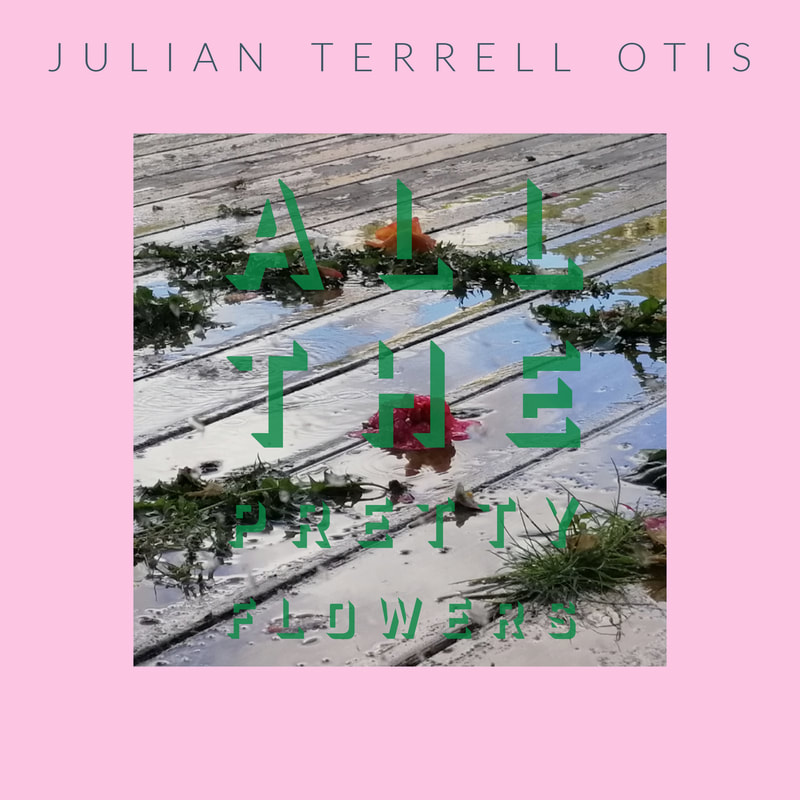
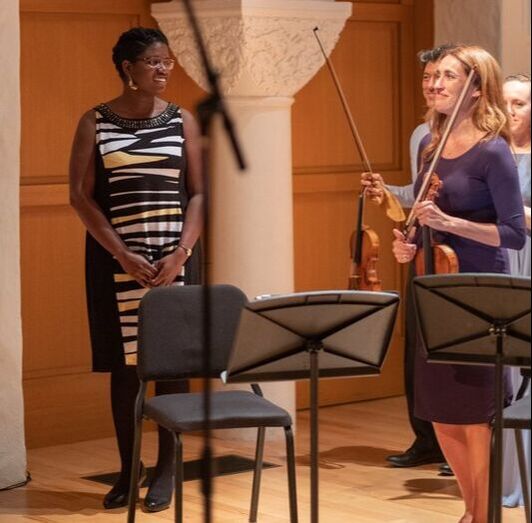
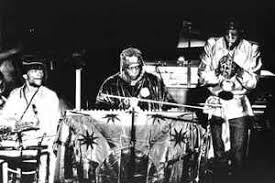
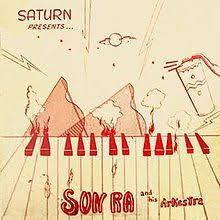
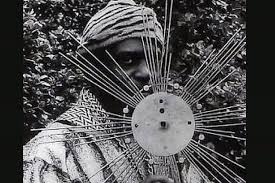
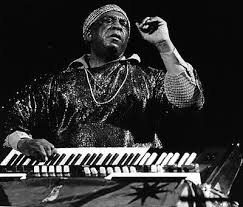
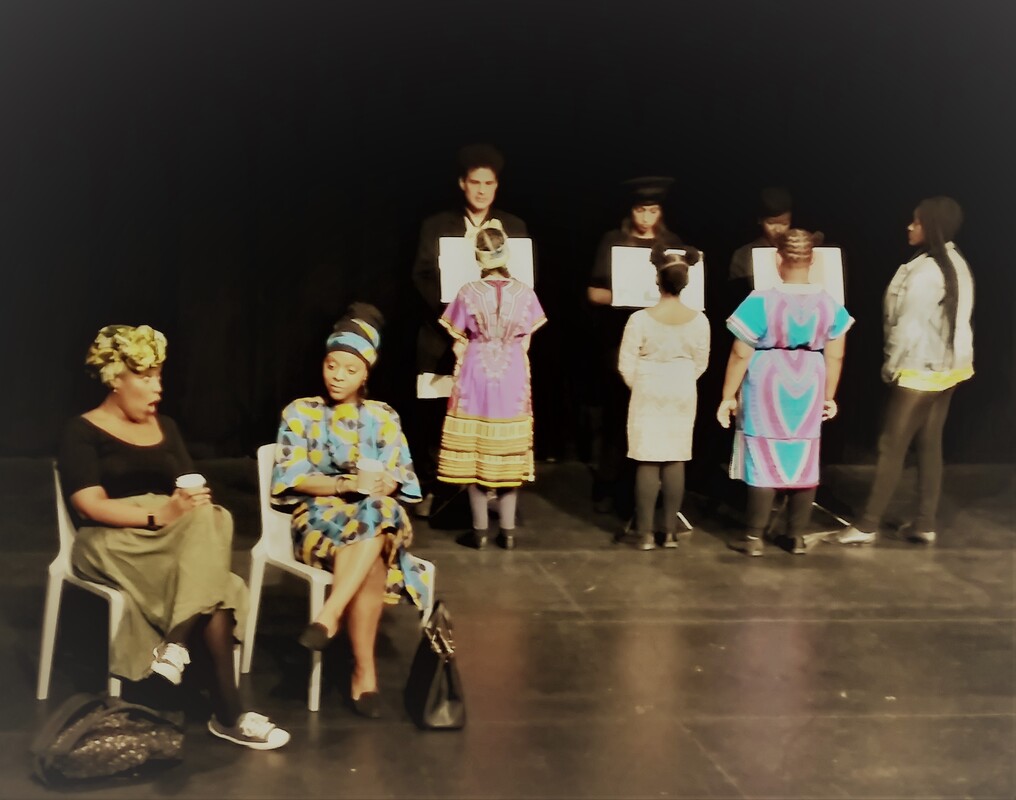
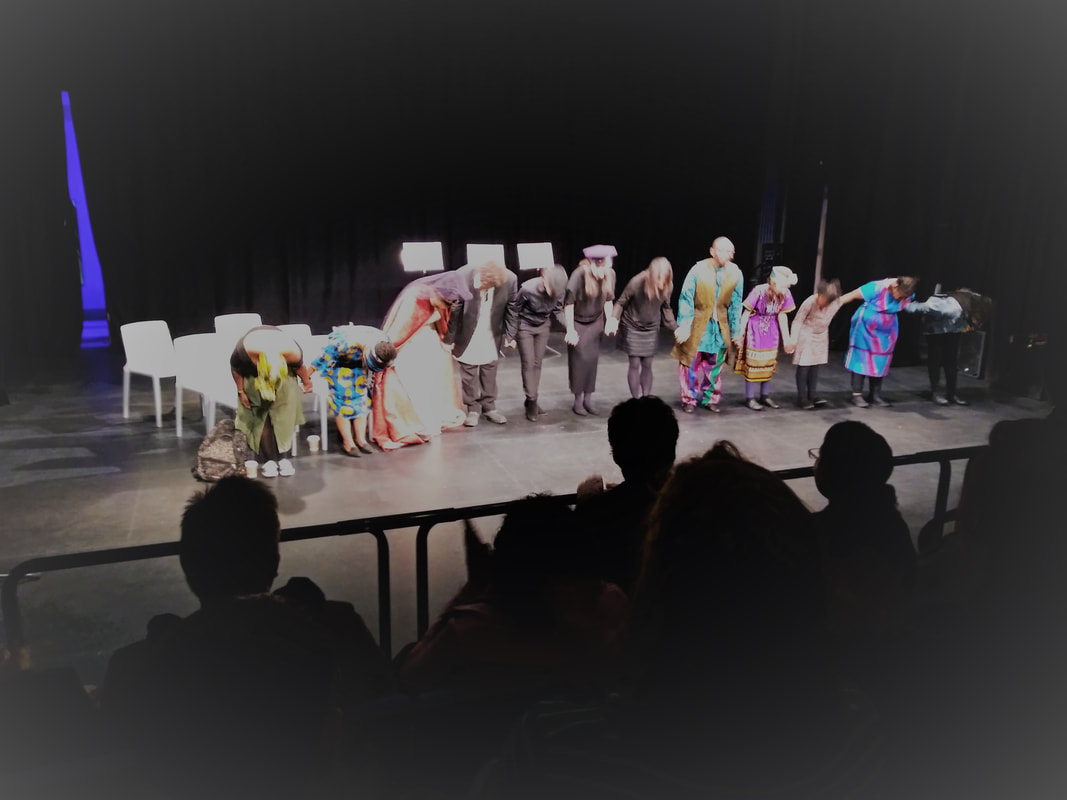
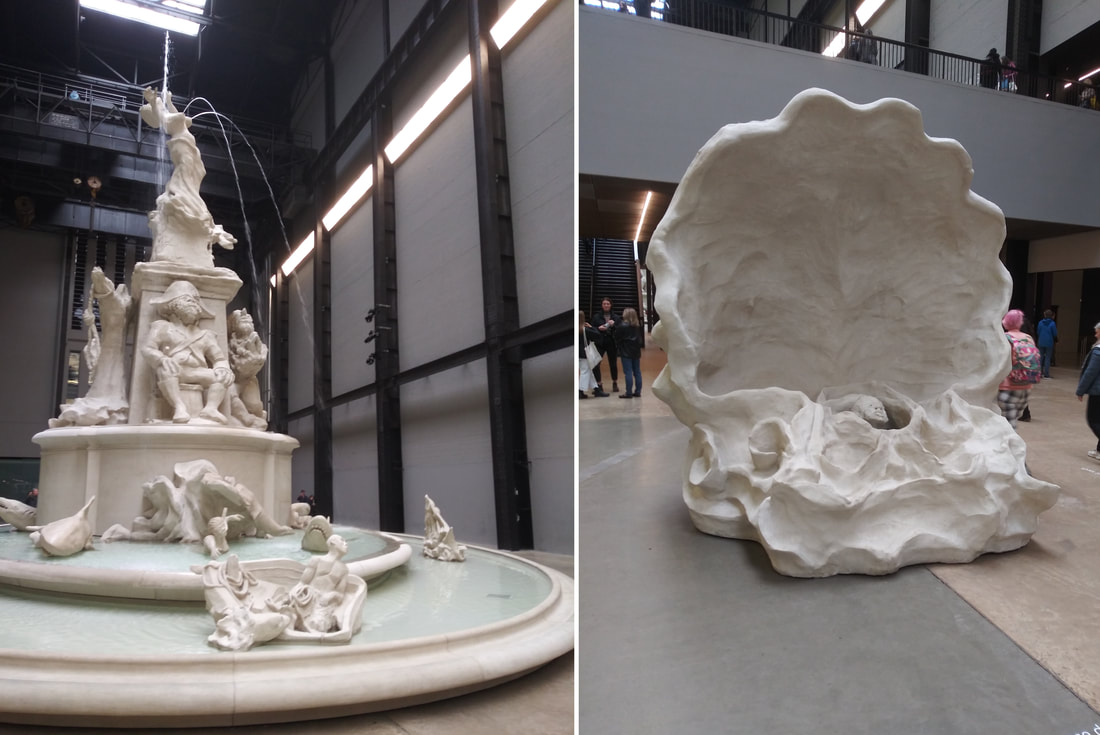
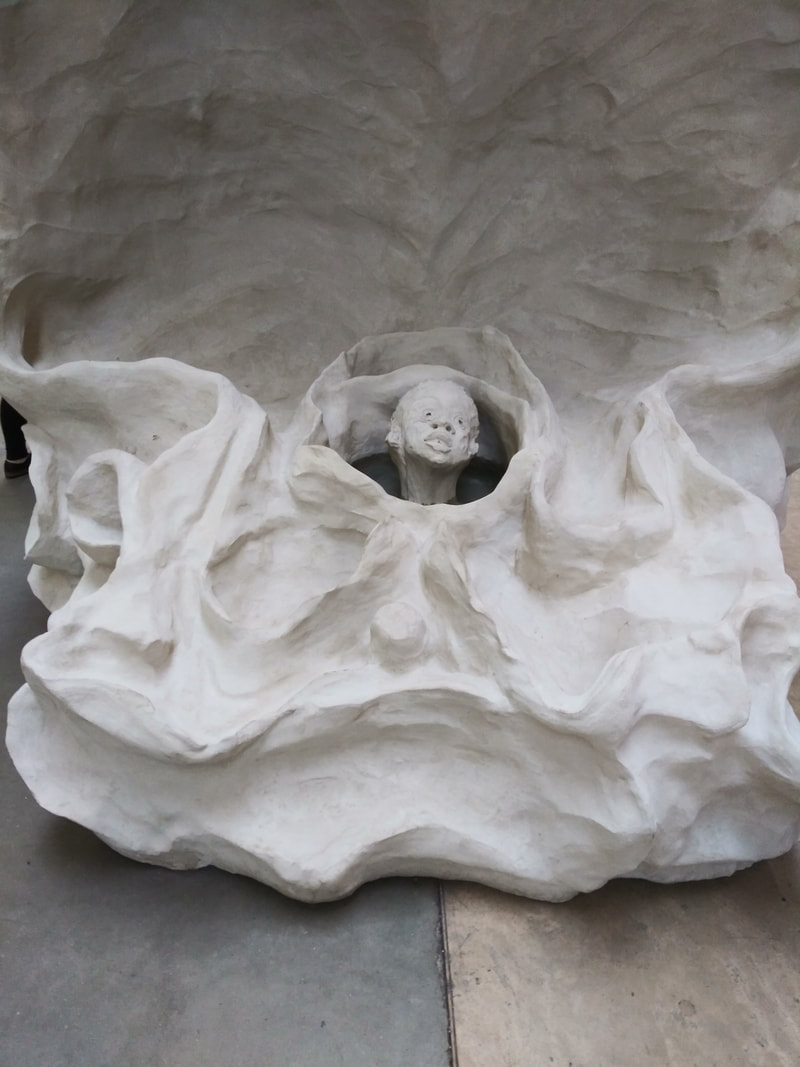
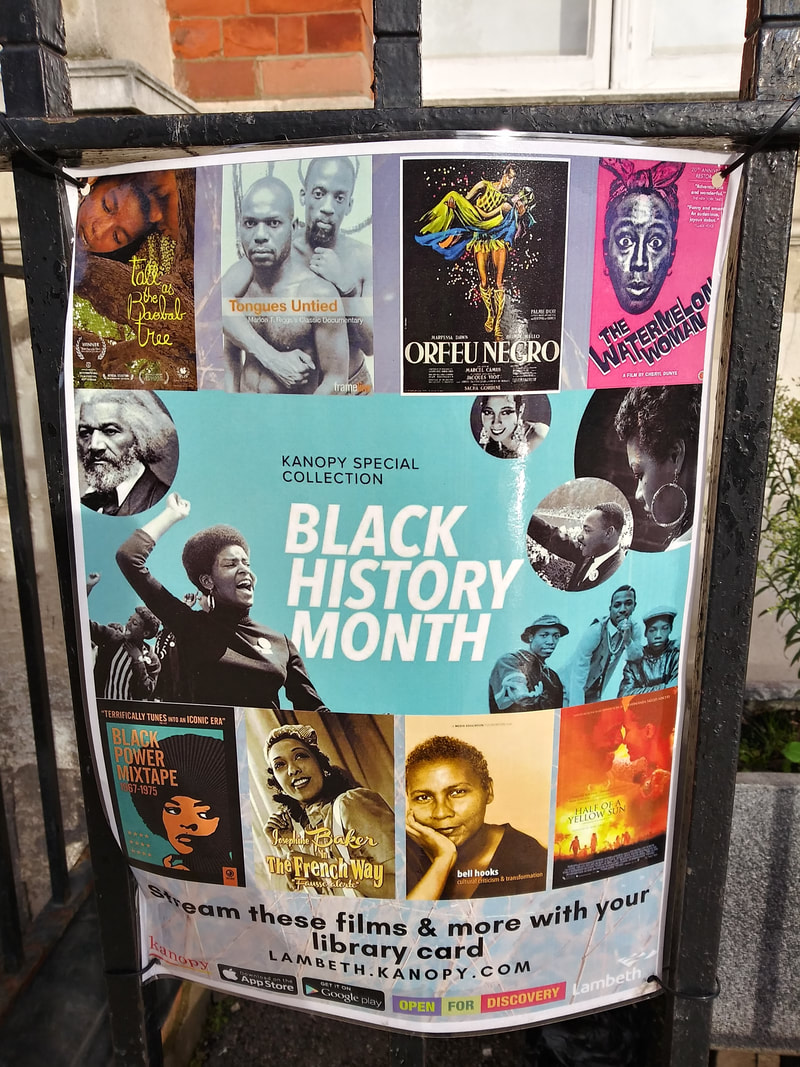
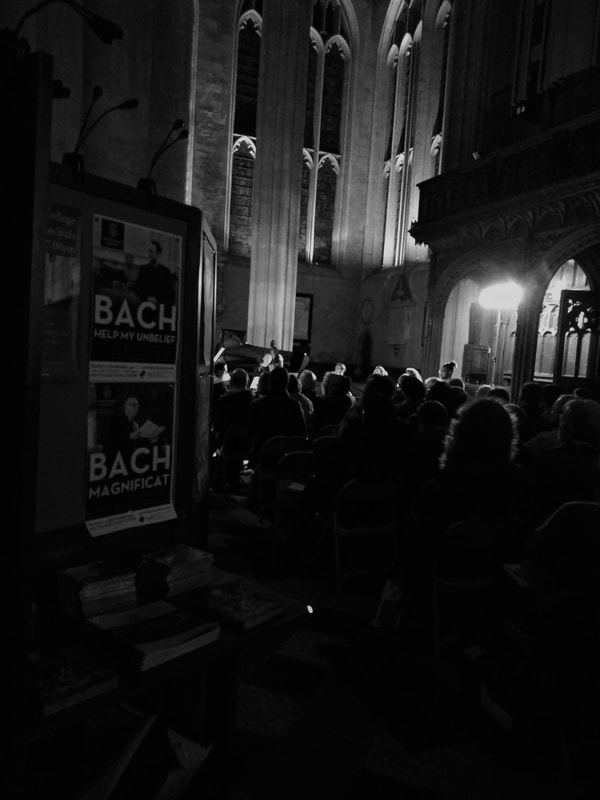

 RSS Feed
RSS Feed










